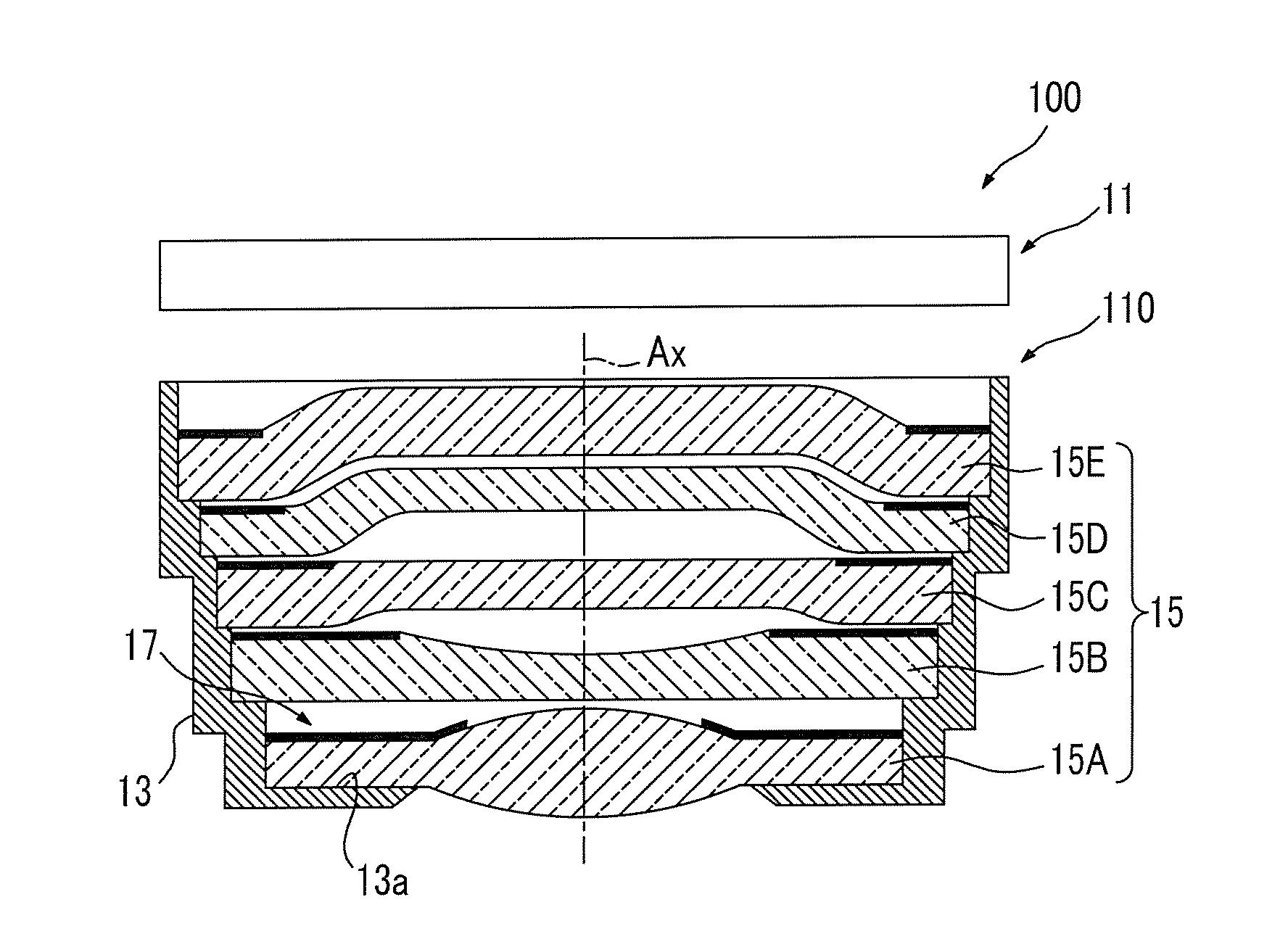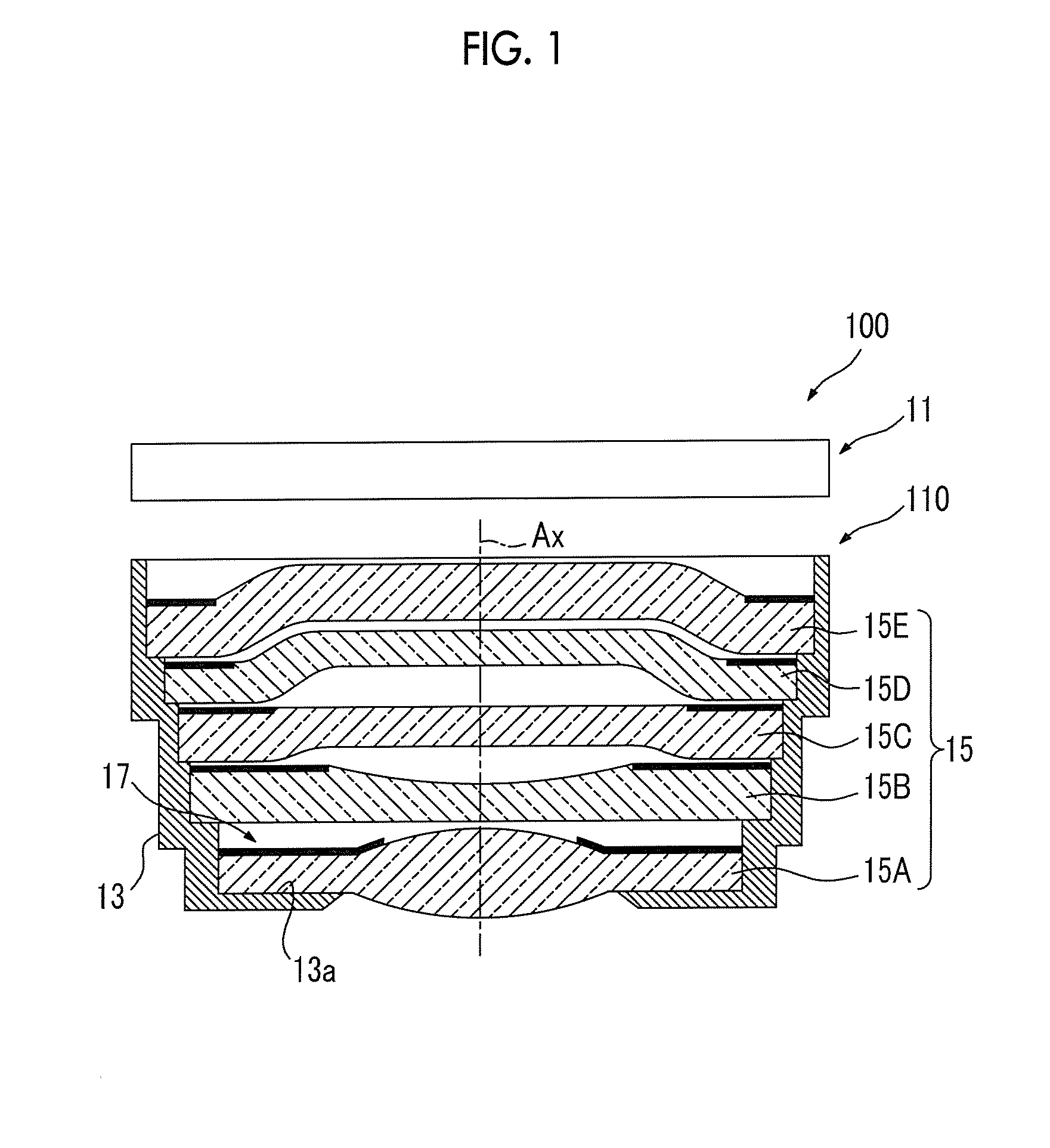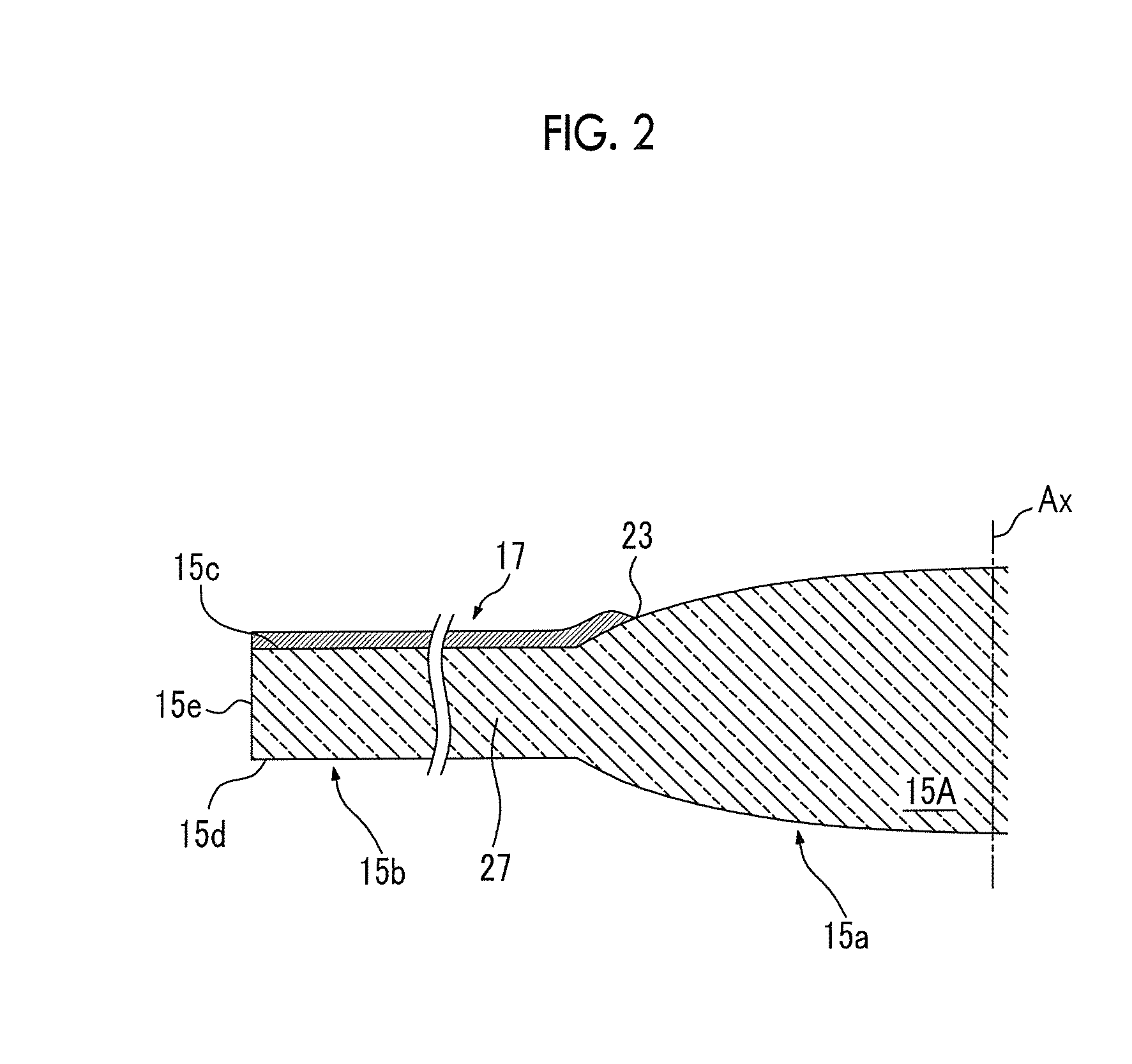Optical lens, method for producing same, lens unit, image-capturing module, and electronic device
a technology of optical lens and lens unit, which is applied in the field of optical lens, can solve the problems that the effect of external light or internal reflected light in the lens cannot be perfectly eliminated, the effect of unnecessary light cannot be reliably eliminated, and the effect of preventing the phenomenon of flashes and ghosts cannot be perfectly prevented
- Summary
- Abstract
- Description
- Claims
- Application Information
AI Technical Summary
Benefits of technology
Problems solved by technology
Method used
Image
Examples
example 1
[0066]An ultraviolet curable ink having the following composition was applied onto the substrate in the ink jet method, thereby forming the light shielding film.
[0067]
[0068]Monomer: 85%, polymerization initiator: 10%, additives: 3%, diphenyl-2,4,6-trimethylbenzoylphosphine oxide: 1%, carbon black: 1%
[0069]The laser blasting process was performed on the light shielding film with laser conditions shown in the following Table 1, thereby roughening the light shielding film surface.
TABLE 1Wavelength1060nmPulse period100kHzPulse width20nsDiameter of laser spot0.05mmφBeam scanning speed2000mm / sEnergy26J / mm2Peak power2kW
[0070]Regarding the light shielding film which is not roughened, assuming that an incident angle of light vertically incident onto the surface is 0°, a gloss level of the light shielding film, which is obtained when light is incident at an incident angle of 60°, was measured. Further, regarding the roughened light shielding film, likewise, the gloss level of the light shield...
example 2
[0071]An antireflective coat was formed on a surface of a lens made of ZEONEX (registered trademark) grade F52R manufactured by Zeon Corporation. The antireflective coat had a 4-layer structure (thickness of 0.2 μm) in which SiO2 and ZrO2 were alternately superimposed, and was formed such that the surface exposed to air was SiO2. This lens surface was irradiated with laser light under the same conditions as those in Example 1, so that the surface was roughened, and transmittances of the lens before and after roughening were measured. Three lenses were provided, and the measurement was performed on the lenses. Measurement results are shown in Table 2. In Table 2, “ave” indicates an average of three measured values.
TABLE 2n = 1n = 2n = 3aveBefore laser92.97%93.05%93.05%93.02%processAfter laser93.19%93.31%93.30%93.27%process
[0072]As shown in Table 2, it was discovered that the difference in transmittance between before and after the laser process was 0.25%, which was within a measureme...
PUM
 Login to View More
Login to View More Abstract
Description
Claims
Application Information
 Login to View More
Login to View More - R&D
- Intellectual Property
- Life Sciences
- Materials
- Tech Scout
- Unparalleled Data Quality
- Higher Quality Content
- 60% Fewer Hallucinations
Browse by: Latest US Patents, China's latest patents, Technical Efficacy Thesaurus, Application Domain, Technology Topic, Popular Technical Reports.
© 2025 PatSnap. All rights reserved.Legal|Privacy policy|Modern Slavery Act Transparency Statement|Sitemap|About US| Contact US: help@patsnap.com



